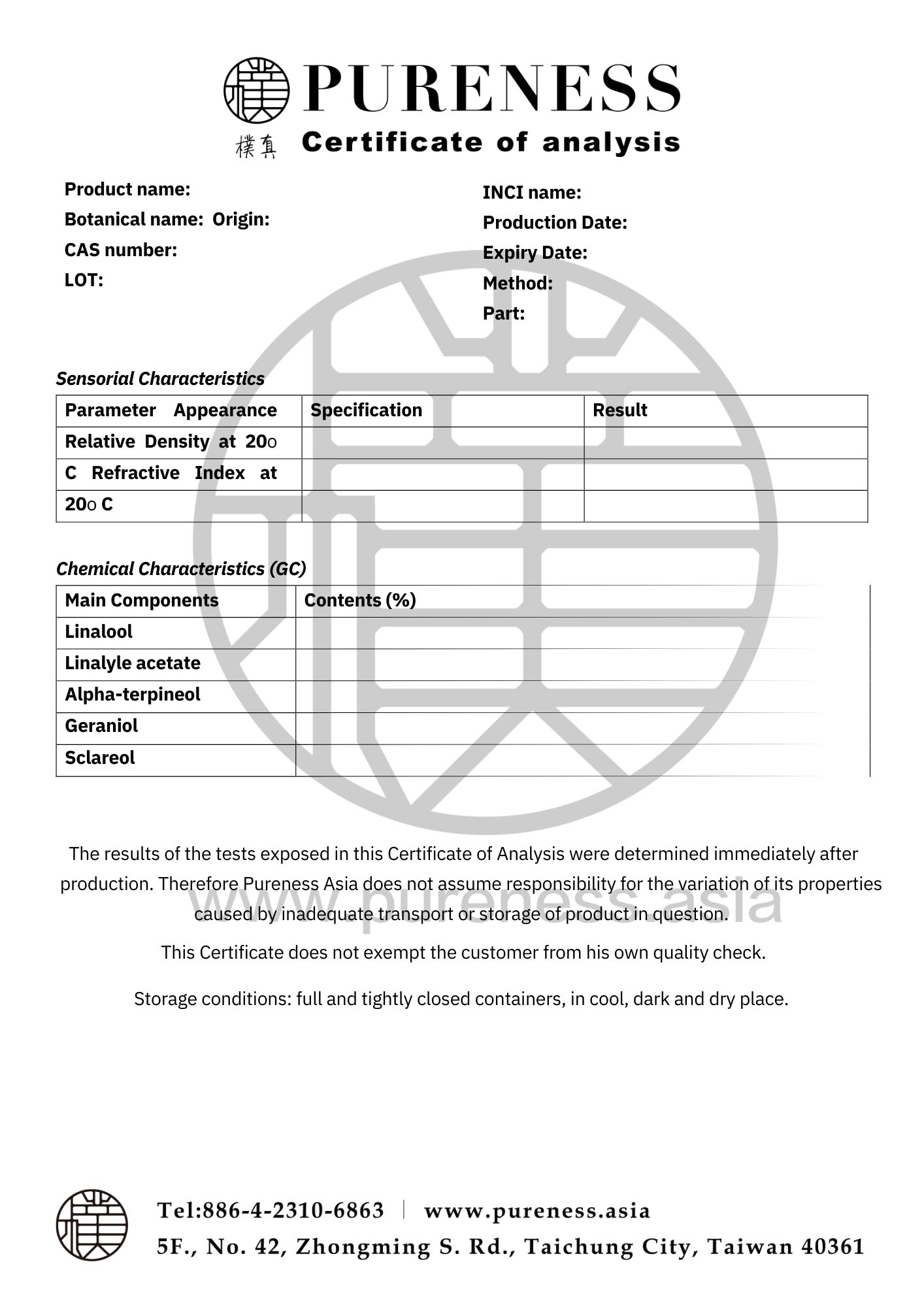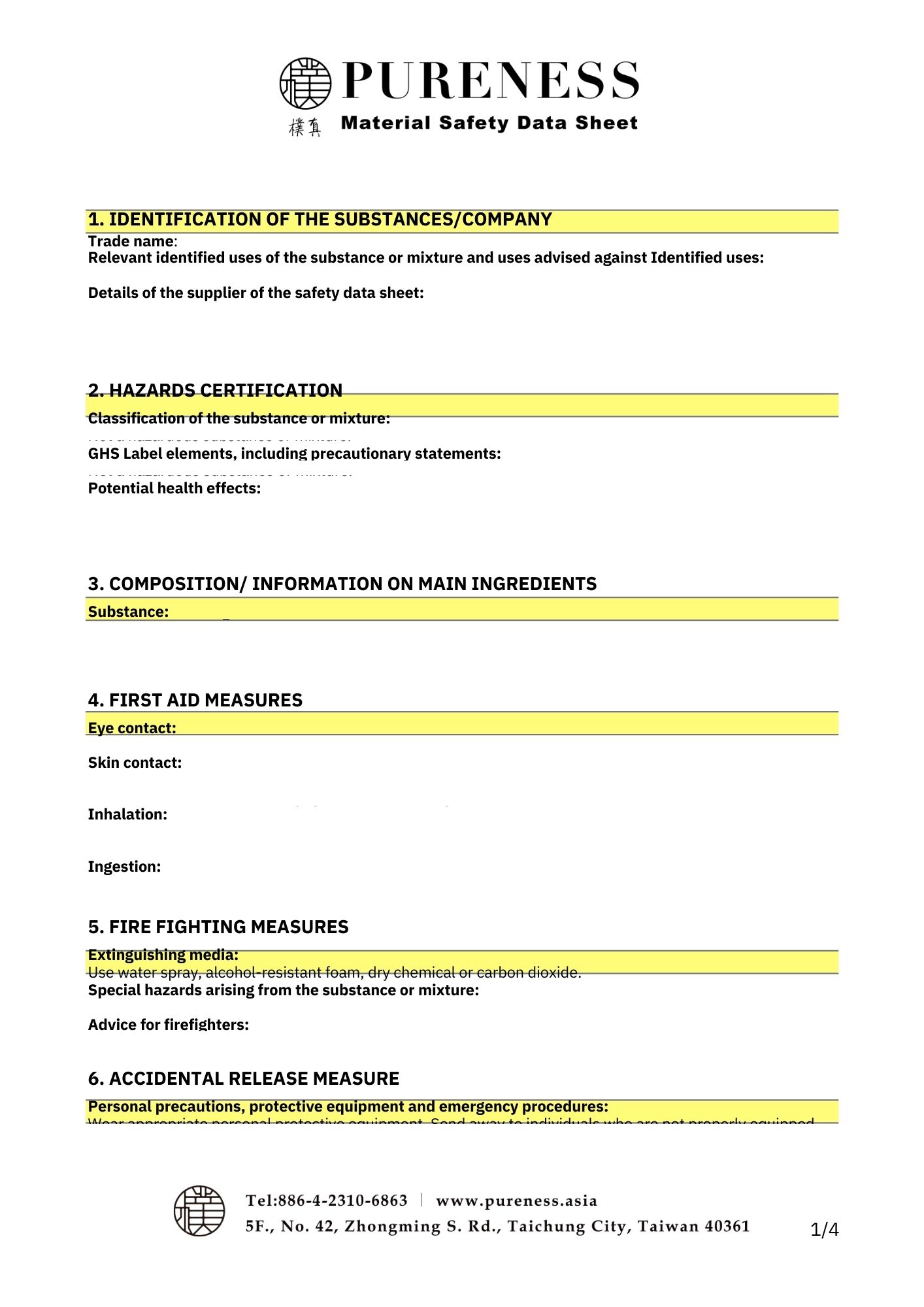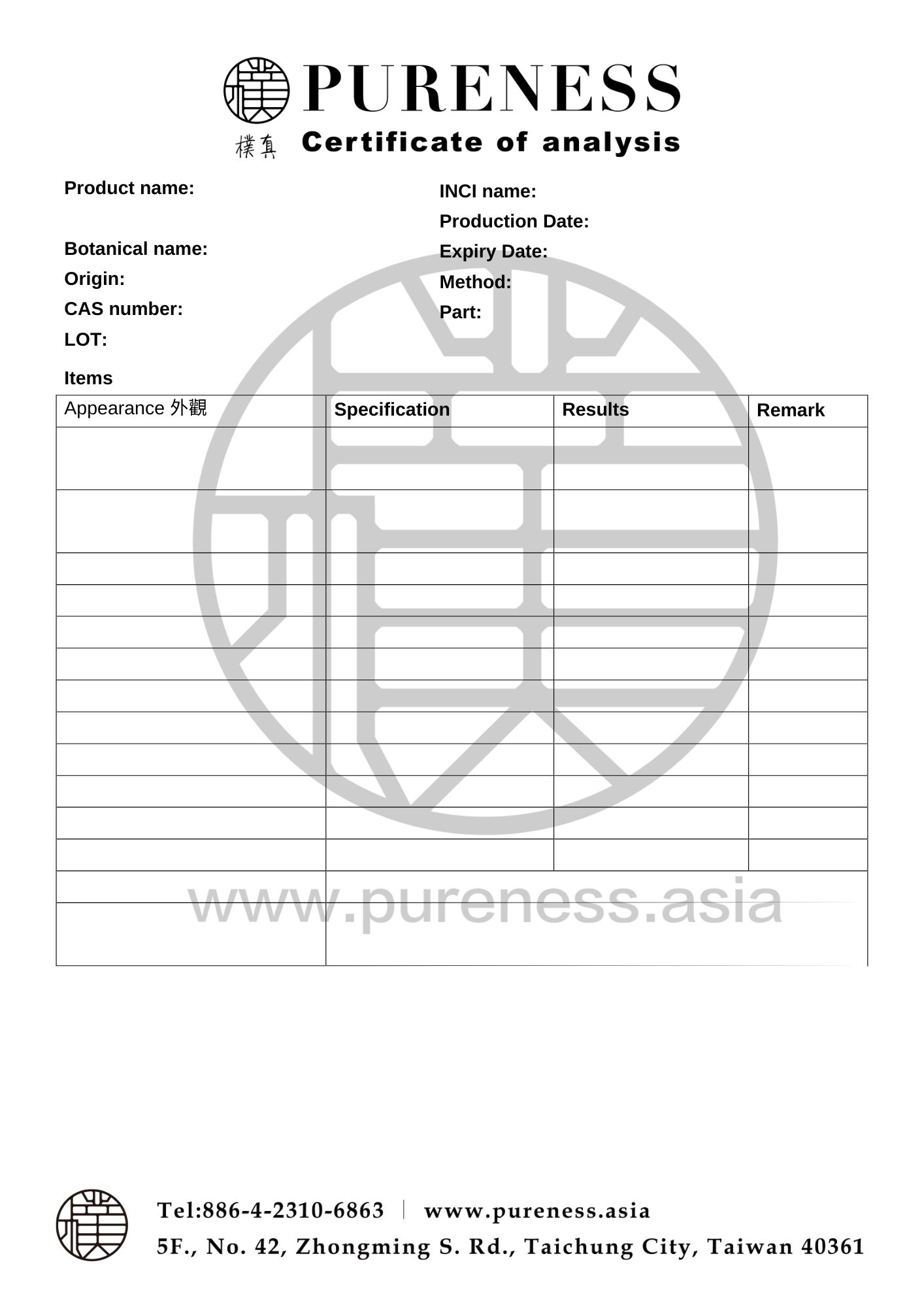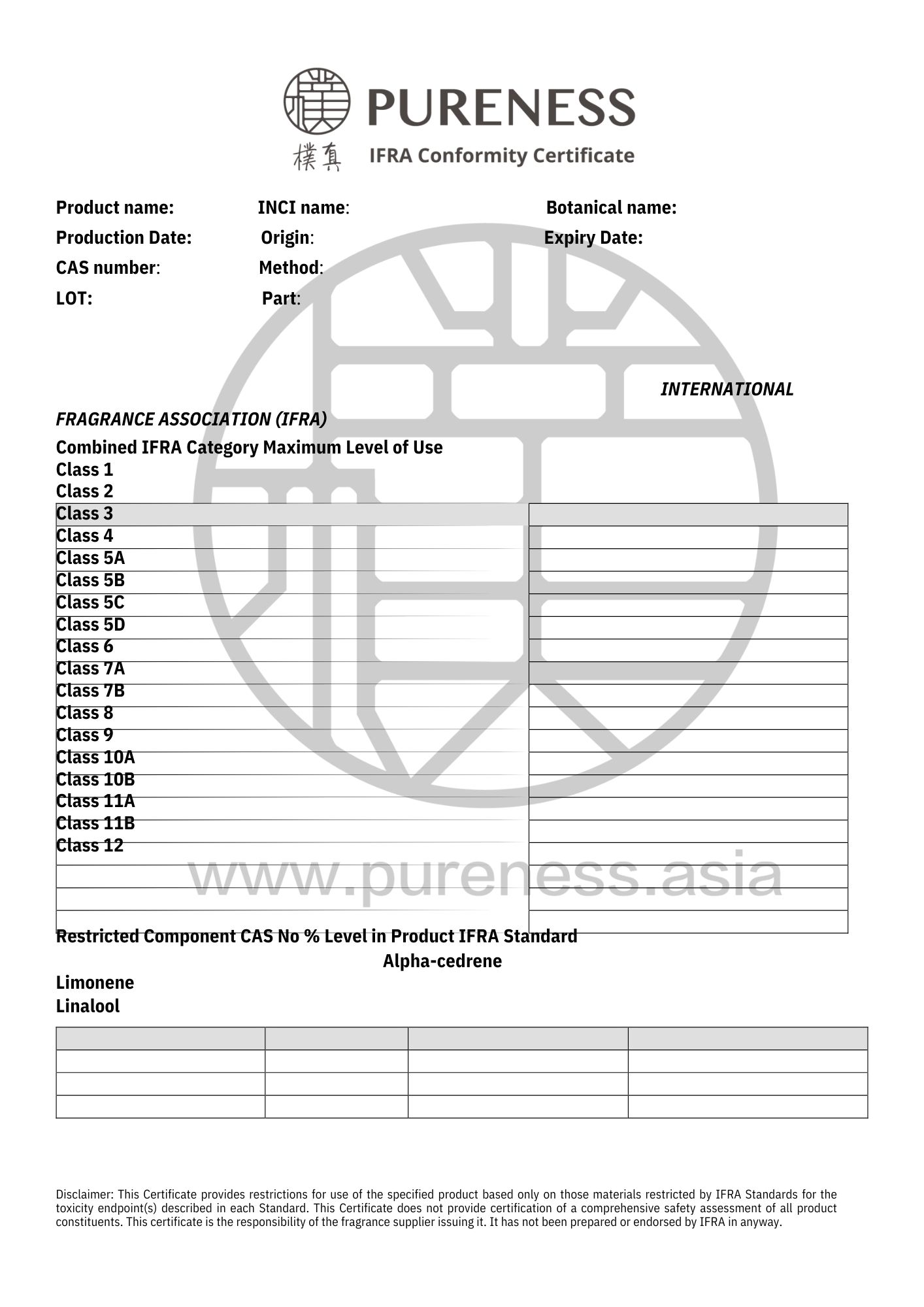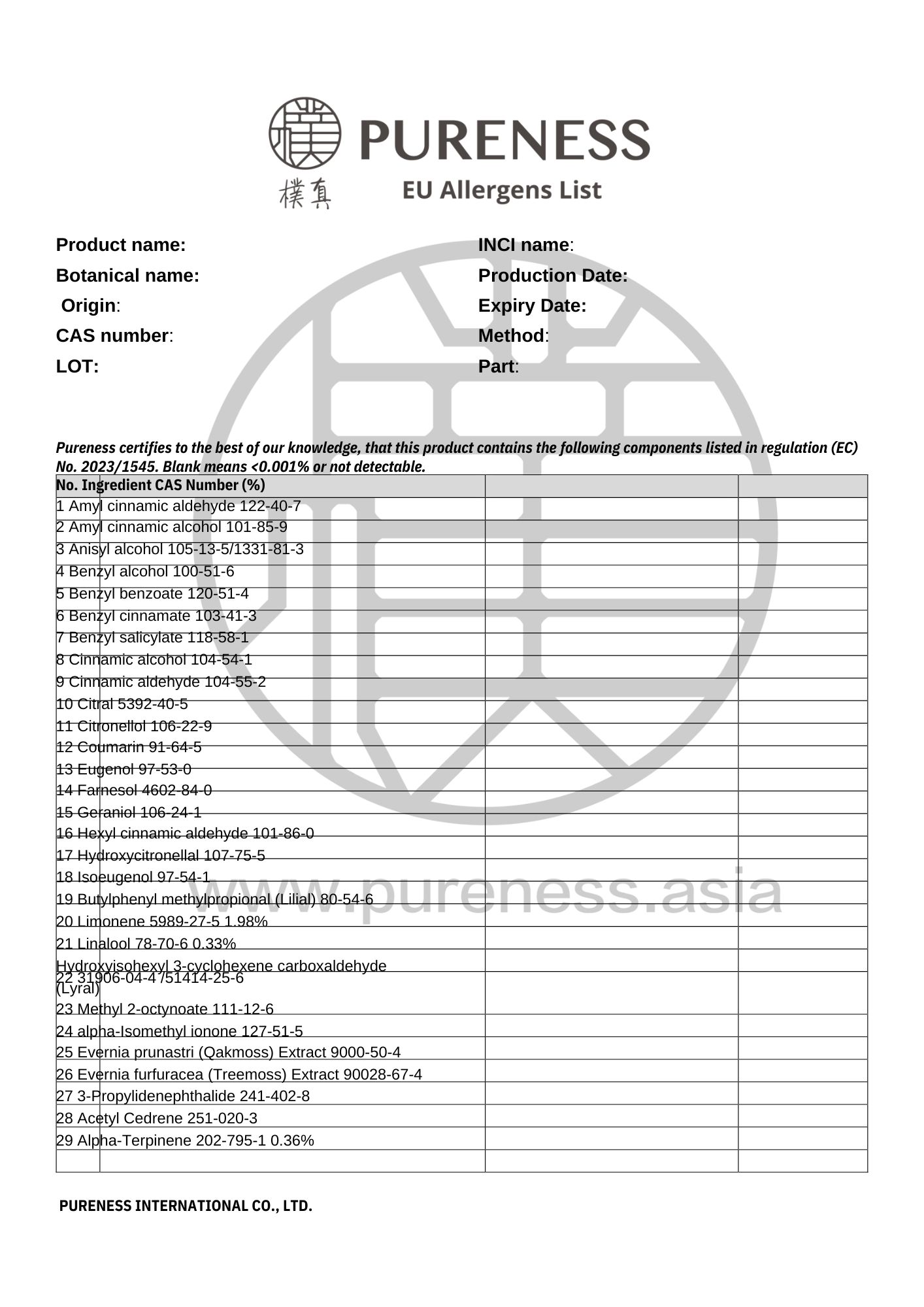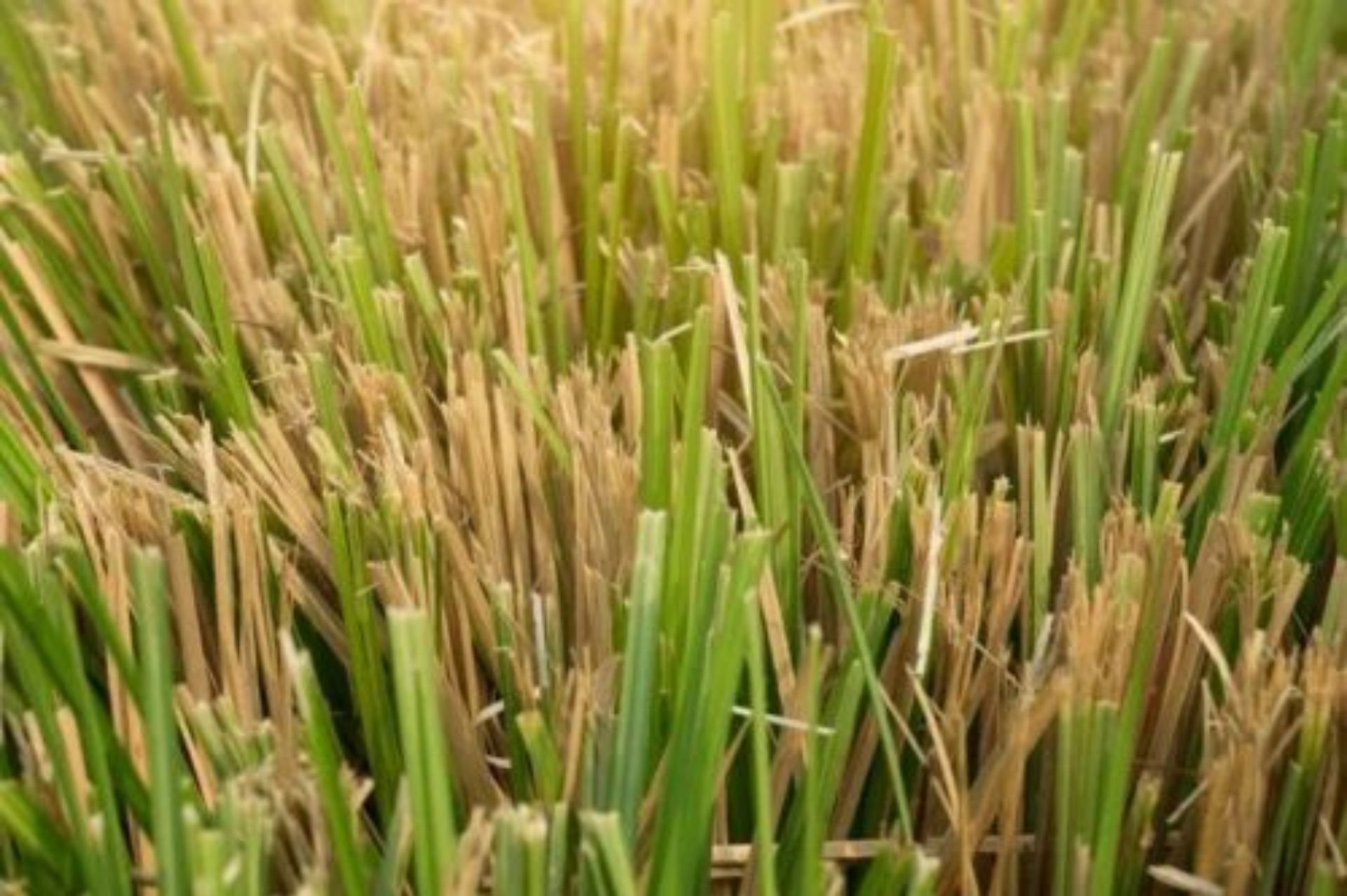
Vetiver
Scientific name|Vertiveria zizanioides
Origin|India
Classification|Root series
Specifications|500g-25kg Please contact sales for details
Extraction part|Roots
Extraction method|Distillation
Plant family|Poaceae
Aroma|Mixed earthy and light grassy scent
▎Essential Oil Introduction
Vetiver comes from the Tamil language Vetiverr, which means harvesting with an axe. The leaves are somewhat similar to miscanthus. They are usually made up of many leaves gathered into one large plant. The stems and leaves of vetiver are upright, with many branched, soft and elastic rhizomes underneath. The roots have strong grip and have solid and stable strength from the soil. They can be used as soil and water conservation plants. They are considered "herbaceous plants with long roots in the world". The deep and dense roots can be buried underground and can reach 3 to 4 meters in length.
Because of this, the collection and extraction process of vetiver essential oil is very complex, time-consuming and labor-intensive. Collectors need to dig out the roots that stretch underground with their bare hands, clean them completely, and then cut them into shorter lengths and dry them in a cool place for 1-2 days to make the extracted essential oil more aromatic.
▎Component Analysis
|Main Component:Sesquiterpenol
The composition of vetiver is very diverse. The main component is vetiselinenol (50-75%). Others include sesquiterpenes (beta-vetivenene, delta-selinene), sesquiterpene esters, and sesquiterpene ketones (alpha- vetivone, beta-vetivone, khusimone), acid, etc. The source of its aroma is mainly affected by α-, ß-vetiverone and benzotrione, and the smell is described as a sweet, woody and smoky aroma.
Component 1: Vetiselinenol
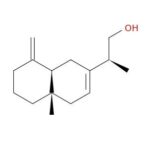
▸ There are four different isomers, which are mixed in vetiver essential oil. They are collectively called Vetiselinenol and are Sesquiterpenol
Component 2: beta-vetivenene
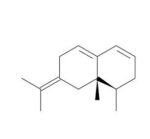
▸ Chemical structure of beta-vetivenene.
Component 3: α、β- vetivone
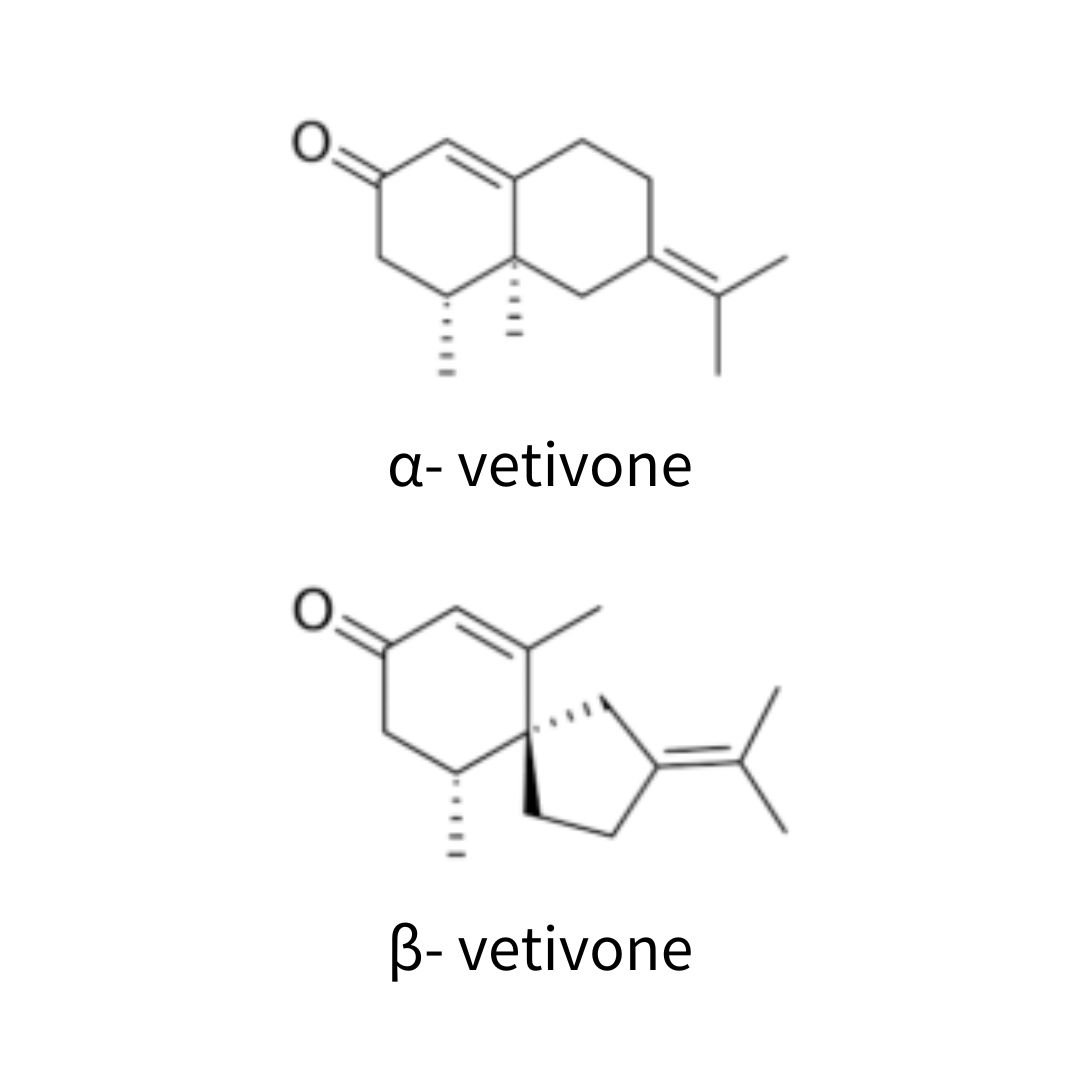
▸ It is a sesquiterpene ketone. Compared with sesquiterpene ketone, it is softer and relatively stable.
|Research Validation
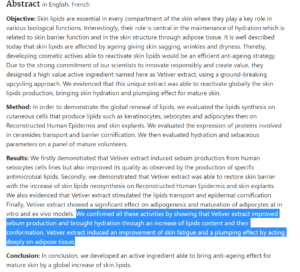
▸ Vetiver extract has been studied in relation to skin lipids.
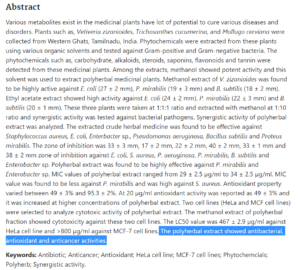
▸ In a study of extracts containing vetiver, there were related studies on bacteria, oxidation, cancer, etc.
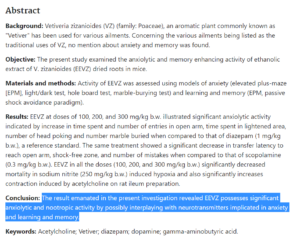
▸ The literature shows that vetiver extract has relevant research on neurotransmitters related to anxiety, learning and memory.
|Raw Material Certifications
To obtain relevant certification information, please contact us on WhatsApp.
▎References
- De Tollenaere M, et al. Overall renewal ofskin lipids with Vetiver extract for a complete anti-ageing strategy.Int J Cosmet Sci. 2021 Apr;43(2):165-180.
- Devanathadesikan Seshadri V, et al. In vitroantioxidant and cytotoxic activities of polyherbal extractsfrom Vetiveria zizanioides, Trichosanthes cucumerina, and Mollugocerviana on HeLa and MCF-7 cell lines. Saudi J Biol Sci. 2020Jun;27(6):1475-1481.
- Matsuo Y, et al. Vetiverianines A, B, and C:Sesquiterpenoids from Vetiveria zizanioides Roots. J Nat Prod.2016 Sep 23;79(9):2175-80.
- Matsubara E, et al. Volatiles emitted fromthe roots of Vetiveria zizanioides suppress the decline inattention during a visual display terminal task. Biomed Res. 2012;33(5):299-308..
- Rathnayake H, et al. Comparison of In VitroAntibacterial Activity of Epaltes divaricata and Vetiveria zizanioides againstMethicillin-Resistant Staphylococcus aureus. Scientifica (Cairo). 2020 Jul14;2020:8239053.
- Kannappan A, et al. Antibiofilm activityof Vetiveria zizanioides root extract againstmethicillin-resistant Staphylococcus aureus. Microb Pathog. 2017 Sep;110:313-324.
- David A, et al. Chemical Composition,Antioxidant, and Antimicrobial Activitiesof Vetiveria zizanioides (L.) Nash Essential Oil Extracted byCarbon Dioxide Expanded Ethanol. Molecules. 2019 May 17;24(10):1897.
- SCCS members, et al. Opinion of theScientific Committee on consumer safety (SCCS) - Final opinion on the safety offragrance ingredient Acetylated Vetiver Oil (AVO) -(Vetiveria zizanioides root extract acetylated) - Submission III.Regul Toxicol Pharmacol. 2019 Oct;107:104389.
- Agronomic and economic evaluation of Vetivergrass (Vetiveria zizanioides L.) as means for phytoremediation ofdiesel polluted soils in Israel. Dudai N, et al. J Environ Manage. 2018Apr 1;211:247-255.
- Burger P, et al. Vetiver Essential Oil in Cosmetics: What IsNew? Medicines (Basel). 2017 Jun 16;4(2):41.
- Nirwane AM, et al. Anxiolytic and nootropic activityof Vetiveria zizanioides roots in mice. J Ayurveda Integr Med.2015;6(3):158-64.
- Del Giudice L, et al. The microbial community of Vetiver rootand its involvement into essential oil biogenesis. Environ Microbiol. 2008Oct;10(10):2824-41.
|Some images sourced from the internet. Contact for copyright removal|
